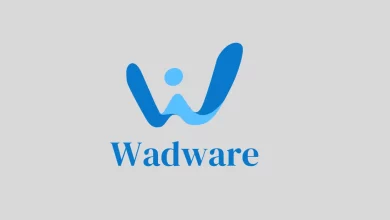How to build a scalable mobile app infrastructure?

Can your app handle resource demands when the users increase tenfolds or a hundred folds? This tutorial provides a real-life, step-by-step guide to scaling your mobile app infrastructure when the need arises.
Table of Contents
Overview of Mobile App
The mobile app is the general term used for apps that runs on mobile devices, be it a smartphone, tablet, or smartwatch. Mobile apps are in three classes; these are web apps, native apps, and hybrid apps.
Web apps are designed with technologies like CSS and HTML5, so they can run on any platform. Native apps can only run on specific software platforms like Android or iOS, while Hybrid apps are typically web apps that run within a native container.
Having defined web apps, let’s take a brief look at mobile app infrastructure.
What is a scalable app architecture?
Building an app that scales can be complicated due to the multiple factors that need to interact together to create a scalable architecture. An app that scales can support concurrent users running into millions and still provide reliable, secure, and optimal performance.
An app with high-performance architecture remains secure, loads fast, and does not crash under heavy load. These are crucial factors we shall be considering while designing scalable server infrastructure for hosting mobile apps.
How does a mobile app infrastructure
The list below details the components that work together to make up a mobile app infrastructure.
- The database server
- Application server
- Load balancer
- Object storage
- Content Delivery Network (CDN)
- APIs
- Software Development Kits (SDKs)
- App Publishing Platform
App publishing platforms
Developers can build mobile apps with a wide range of technologies. For instance, Swift is used for building iOS native apps while Java/Kotlin is deployed for building native Android apps. Frameworks like Flutter and React Native are often used to build cross-platform mobile apps. These technologies are often used while developing the user client-side interface of an app, which is commonly referred to as the frontend.
After creating an app, developers must submit it to publishing platforms like App Store and Google Play to make the app available for users to download and install. The procedure involves submitting the app to the publishing platform to review and subsequently publish the app
The publishing guidelines for App Store and Google Play are not the same. You should read each platform’s documentation so you can avoid potential issues while attempting to publish your app.
You can circumvent the application store scrutiny procedure by using the Progressive Web Application (PWA) route. This term refers to technologies like Ionic, React, and Angular.
SDKs – Software Development Kits
You need Software Development Kits to build a scalable mobile app infrastructure. SDKs consist of a suite of tools that enhances app development assignments like debuggers, libraries, APIs, documentation, and lots more.
All mobile backend SDKs often contain tools that will connect the frontend elements to the backend. For instance, the procedure for sending push notifications entails initiating the message from the backend and delivering it to the front-end (user interface). The SDK takes care of the entire process and handles the integration of other app functions.
APIs – Application Programming Interfaces
The role of APIs in mobile app architecture designs cannot be overemphasized. APIs function by connecting the apps server-side (backend) to the client-side(frontend).
API plays several vital roles in backend architecture design, such as facilitating new service distribution, handling custom functions, streamlining information delivery, automating tasks, and much more.
CDN – Content Delivery Network
Content Delivery Network consists of a group of servers established in various geolocations to expedite the delivery of content to users globally. Since these servers are geographically closer to the end users, images and videos will download faster.
Besides expediting asset download, CDN also enhances app response by optimizing routing channels, thereby reducing latency when a user device is communicating with the server. This leads to lower bandwidth costs and enhanced security by protection from attacks like DDoS.
Object Storage
The function of Object Storage in a mobile app infrastructure is to connect the CDN and manage the storage of data like text, video, images, documents, and lots more. The CDN simply stores the content by caching and delivers it faster when users in nearby geolocation request it.
Load Balancers
The load balancer is another critical layer you must establish while building a scalable mobile app infrastructure. The function of the load balancer is to distribute tasks to individual servers to enhance optimal performance.
The load balancers stand inbetween the CDN to distribute requests from users efficiently among the available servers. As such, the servers work efficiently and can scale up and down as the need arises.
Application Servers
The next step is to put an infrastructure in place to take care of the business logic. In this case, it will be the application servers that stand in between the database servers and the content delivery network.
Database Servers
The database server is the last infrastructure you need to have in place while creating a scalable mobile app infrastructure. The database servers are often established in clusters, these are high-powered machines/server instances for storing, retrieving, and manipulating the content of the database.
You can choose to make the database infrastructure redundant or otherwise. In the case of redundant architecture, two or more instances are established that sync data in real-time.
How do you scale a mobile application?
There are two approaches to developing a scalable mobile app infrastructure. You can either choose to build everything from scratch using an Infrastructure as a Service provider or use a Mobile Backend as a Service that offers turnkey managed solutions.
Backend as a Service offers a scalable infrastructure that you can deploy instantly. You can also take advantage of SDKs for connecting all backend and frontend, and ready-to-use building blocks that enhance backend development. As you can see, it is faster and more straightforward to establish a scalable mobile app infrastructure with BaaS.
The option of scalable spp backend infrastructure development from scratch offers developers the power to control the infrastructure components as desired. However, this level of flexibility comes with a responsibility to manage the backend and establish mechanisms that handle infrastructure upscale and downscale as required.
Here is a more detailed overview of each option.
BaaS – Backend as a Service
The procedure for scaling a mobile app backend infrastructure with a BaaS is straightforward because the service provider has established the facilities for scaling already. Backend as a Service companies work to provide a secure, scalable, and easy-to-use backend architecture for their customers.
That is why BaaS offers turnkey, scalable solutions. Developers on BaaS platforms only need to write their business logic, use SDKs for frontend-backend, and upload relevant data.
Developers using the Back4app platform have access to several production-ready SDKs including Android, iOS, Flutter, React Native, Xamarin, JavaScript, and lots more.
Custom scalable infrastructure option
With this second option, you will be leveraging cloud service providers like Digital Ocean, AWS, Azure, Google Cloud, etc to develop a scalable mobile backend infrastructure. The power of this option lies in the high level of flexibility and control over the backend infrastructure.
On the other hand, the engineering efforts and costs required to establish and maintain a scalable infrastructure can be challenging. You will have to develop boilerplate code and create a system for 24/7 monitoring of the infrastructure.
Most developers around the world use the AWS service for their cloud solutions. This platform is an excellent choice for scalable mobile app infrastructure development.
Conclusion
Mobile apps are programs that run on mobile devices like smartwatches, tablets, and smartphones. Most apps take the form of web, hybrid, and mobile apps.
Scalable mobile backend infrastructures are designed to eliminate downtime while maximizing speed and security.
Scalable infrastructures consist of database and application servers, load balancers, CDNs, APIs, SDKs, and app publishing platforms.
The two main channels for building scalable mobile app infrastructure are the custom-built backend on cloud services like AWS and Backend as a Service solution.
The custom-built mobile infrastructure offers higher flexibility and control while the Backend as a Service route to building scalable infrastructure is faster, secure, and offers ready-made features.
This article presents a detailed explanation of mobile backend architecture and how to build one that scales. Do you want to build a scalable mobile backend architecture without going through the hassles of engineering one? Get in touch with Back4App to learn more about their turnkey solutions.
For more valuable information visit this website




